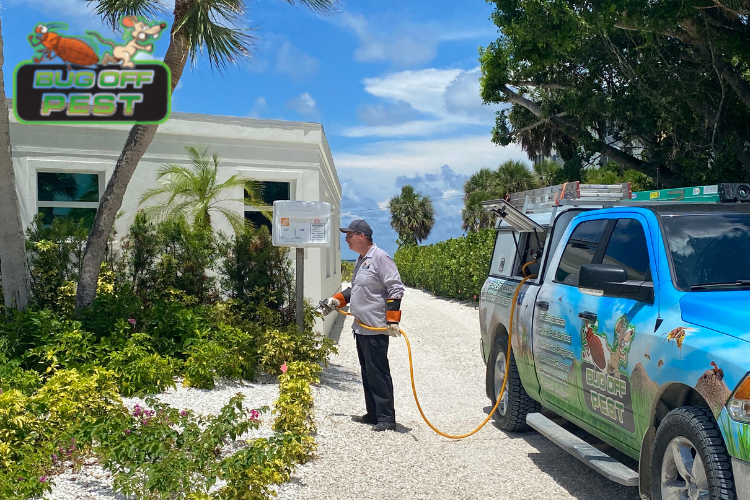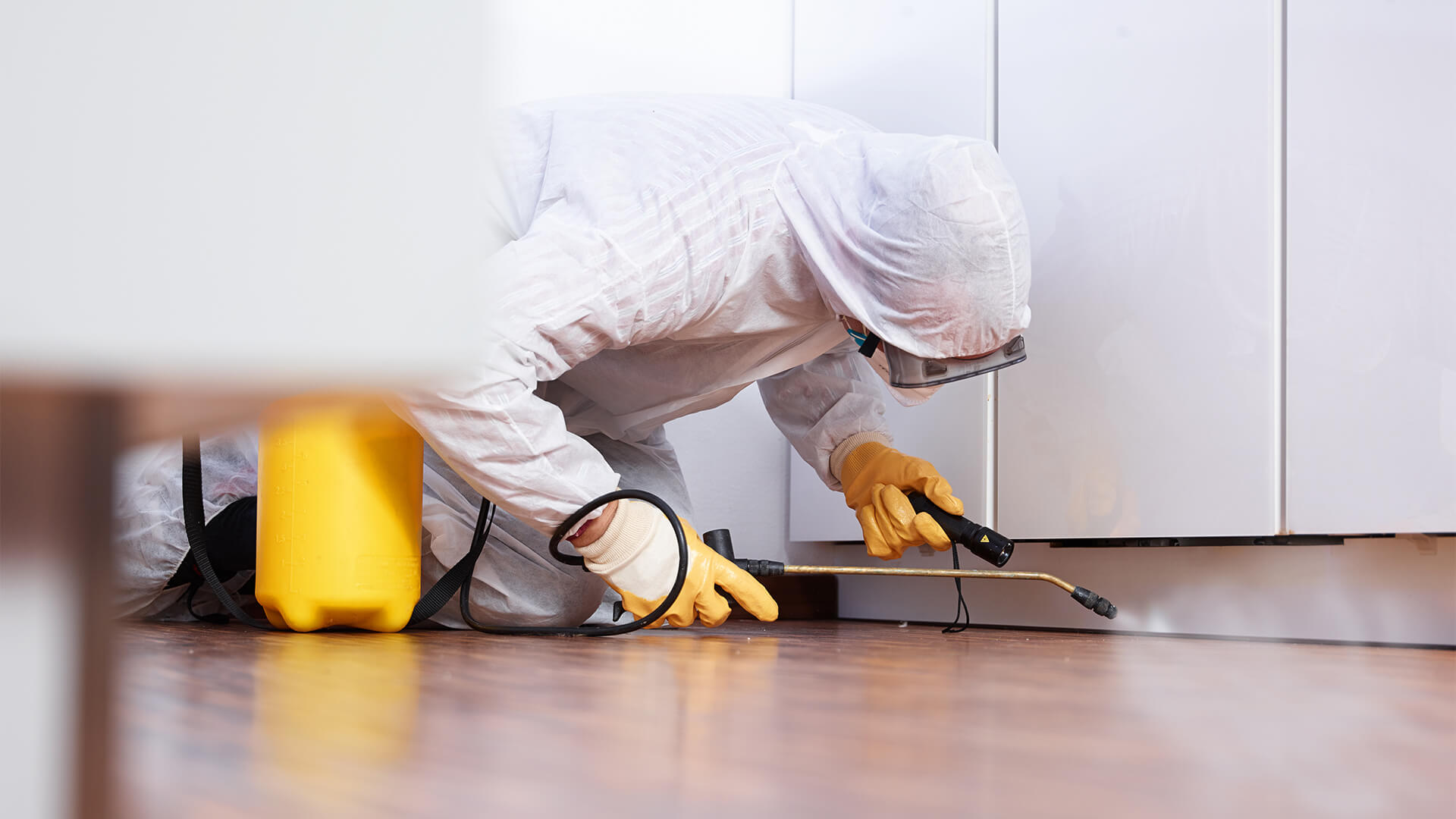Expert Rodent Control Port Charlotte to Prevent Damage to Your Home
Learn Regarding the Latest Developments in Bug Control and Exactly How to Execute Reliable Treatment Solutions
In recent times, the field of pest control has seen substantial innovations, driven by the need for effective and sustainable therapy remedies. Ingenious approaches such as Integrated Pest Monitoring (IPM) combine environmentally friendly exercise with innovative modern technology, enhancing both efficiency and environmental responsibility. Additionally, the combination of smart innovations and do it yourself techniques has equipped people to deal with pest issues better. As we explore these advancements, it ends up being important to comprehend just how ideal to carry out these methods in different setups to achieve optimal outcomes. The effects for insect management techniques could be transformative.
Eco-Friendly Pest Control Options
In the last few years, the need for environment-friendly bug control choices has risen as home owners and companies alike seek sustainable options to typical chemical treatments. This shift is driven by expanding ecological awareness and a need to lessen the wellness threats related to synthetic chemicals.

Environmentally friendly bug control techniques encompass a series of methods that focus on the use of all-natural compounds and methods. Integrated Insect Management (IPM) is one such method, incorporating biological, cultural, and mechanical methods to take care of insect populations while decreasing reliance on chemicals (Wildlife removal services). This holistic method emphasizes avoidance through environment manipulation and the intro of natural predators, therefore promoting a balanced environment
Another prominent option is making use of herb pesticides obtained from plants, which often tend to be much less damaging to non-target organisms. Products like neem oil and diatomaceous planet have actually acquired grip for their effectiveness in controlling pests while posturing very little threats to human wellness and the setting.
Furthermore, exclusion techniques, such as sealing access factors and keeping cleanliness, play a crucial function in eco-friendly bug management. By adopting these sustainable techniques, companies and people can effectively take care of bugs while promoting a healthier world for future generations.
Smart Modern Technology in Bug Monitoring
Technology is improving the landscape of insect management, with smart technology emerging as an essential force in improving efficiency and effectiveness - Wildlife removal services. The combination of Net of Points (IoT) gadgets, expert system (AI), and information analytics is changing exactly how pest control experts approach invasions
Smart traps geared up with sensors can identify bug task in real-time, sending prompt alerts to operators. This enables prompt reactions, decreasing damage and lowering the demand for comprehensive treatments. Additionally, AI formulas assess historical information to anticipate parasite actions, making it possible for proactive interventions based on ecological conditions and problem patterns.
Drones and automatic cars are likewise playing a significant duty in parasite management, providing aerial assessments of big locations, determining hotspots, and also distributing targeted therapies. These innovations not just enhance procedures however also improve safety and security by restricting human direct exposure to potentially unsafe chemicals.
Additionally, mobile applications empower consumers to check parasite task and access expert suggestions, fostering a collective strategy to pest monitoring. In general, the fostering of wise innovation is setting a brand-new standard in pest control, emphasizing data-driven choices and sustainable methods that ultimately benefit both professionals and homeowners alike.
Integrated Bug Management Techniques
Integrated Insect Management (IPM) employs an all natural technique to pest control, integrating numerous methods to efficiently take care of insect populaces while decreasing threats to human health and the atmosphere. IPM focuses on recognizing the pest life process, their all-natural opponents, and the community in which they grow.
Among the basic parts of IPM this content is monitoring pest populaces with regular examinations and information collection. This permits the identification of bug thresholds, identifying when treatment is necessary. Social methods, such as crop turning, sanitation, and environment manipulation, are important in minimizing pest occurrence and promoting plant health.
Mechanical controls, consisting of catches and obstacles, are additionally important in IPM. These techniques can physically remove or prevent insects without using chemicals. When essential, the cautious application of chemical controls is utilized, concentrating on targeted treatments that lessen environmental influence.
Education and partnership amongst stakeholders, including farmers, insect control professionals, and the neighborhood, are critical for the effective application of IPM strategies. By prioritizing sustainable practices, IPM not only addresses pest concerns however also promotes a much healthier environment.
Biological Control Methods
Many biological control approaches are increasingly recognized for their efficiency in taking care of parasite populaces while promoting eco-friendly equilibrium. These techniques harness all-natural killers, bloodsuckers, and virus to reduce pest numbers without relying upon artificial chemicals. For example, the introduction of ladybugs can properly regulate aphid populations, while nematodes target soil-dwelling pest larvae.
In addition, using microbial chemicals, such as Bacillus thuringiensis (Bt), supplies an eco-friendly alternative for managing caterpillar insects. These products particularly target pest varieties, lessening harm to beneficial insects and pollinators. Additionally, conservation biological control emphasizes improving habitats for all-natural enemies, such as birds and advantageous bugs, thus encouraging their visibility in agricultural systems.
Research continues to expose ingenious approaches within this field, pest and termite such as using pheromones to interfere with pest mating patterns or the advancement of biocontrol agents through genetic design. Implementing these approaches can bring about sustainable bug monitoring techniques that minimize the dependence on chemical interventions, inevitably promoting much healthier environments. As awareness of these strategies grows, they are ending up being essential components of integrated insect administration (IPM) methods, supplying an equilibrium between effective pest control and environmental stewardship.
Do It Yourself Parasite Control Solutions
As home owners look for effective methods to take on parasite problems, DIY bug control options have actually acquired popularity for their ease of access and cost-effectiveness. These approaches empower people to deal with invasions making use of conveniently available products and techniques, often without the need for specialist intervention.

In addition, preserving proper cleanliness and routine assessments can avoid pest access and nesting (Wildlife removal services). Easy techniques, such as securing splits, removing food resources, and decluttering, can dramatically lessen parasite populations. Traps, both homemade and readily readily available, can also provide effective solutions for tracking and managing details bugs like pests or rats

Final Thought
The assimilation of environment-friendly bug control options, wise innovation, and innovative administration methods offers an extensive strategy to reliable pest management. By welcoming Integrated Insect Administration (IPM) and making use of organic control techniques, together with DIY remedies, responsible and lasting parasite control can be accomplished. These innovations not just improve the efficiency of pest management methods however additionally contribute to a much healthier setting. Carrying out these methods cultivates a well balanced community while efficiently addressing pest populations.
Environmentally friendly insect control techniques include an array of approaches that focus on the usage of all-natural substances and practices. Integrated Parasite Management (IPM) is one such read what he said technique, incorporating biological, cultural, and mechanical techniques to manage insect populaces while reducing dependence on chemicals. As recognition of these methods expands, they are coming to be important parts of integrated bug management (IPM) approaches, offering an equilibrium between efficient insect control and ecological stewardship.
The assimilation of environmentally friendly bug control alternatives, smart innovation, and ingenious management methods offers a detailed approach to effective pest administration. By accepting Integrated Bug Monitoring (IPM) and utilizing organic control approaches, together with DIY options, liable and sustainable pest control can be accomplished.